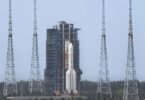Prime Minister Imran Khan has accorded approval to the overambitious textiles export policy 2025. The policy envisages a high jump in exports to $28 billion in the next five years by 2025. Currently exports of cloth, knitwear and readymade garments have remained stagnant at $3.8 billion, securing a share of 1.6 percent in the global textile market. Efforts shall be made to increase it to 3 percent or $7 billion in absolute terms in the next fiscal year. It is really a million dollars question as to how this quantum leap can be taken in the prevailing situation of unfavourable input-output ratio which make the value added products less competitive in the international market. It is the reasonably low cost of factors of production including technology, highly skilled labour and inputs such as raw material and of course prices of energy inputs that give competitive edge to exports in the international market.
Under the textile export policy, the electricity and gas tariffs will remain fixed at 7.5 cents per unit and 6.5 cents per mmbtu for the next five years. Provision of electricity on subsidized tariff for such a long period seems impossible if power sector reforms for achieving optimal energy mix are not implemented. Can these reforms be done without addressing the issues of inflated tariff allowed to IPPs, curbing the well-entrenched culture of electricity bills default and rising technical losses in the transmission and distribution system? How can the impact of imported RLNG from Qatar at$13 mmbtu and distribution network losses be minimized to provide gas at subsidizes price?
A noteworthy feature of the textile policy is to enhance cotton yield to 20 million bales by providing improved quality of seeds to farmers. The incentive of high yield variety of cotton seed alone may not produce the desired result. Doubling of cotton production will require substantially raising the minimum support price of cotton lint, water availability for the standing crop and growing such plantation that survives the climate change impact. It merits mention that heat wave destroyed 25 percent cotton crop in Sindh last and cotton production of 10.5 million bales was obtained against the set target of 15 million. National assembly Sub-Committee of the Special Standing Committee on Agriculture had recommended increase in minimum support price for cotton but the incentive has not yet been approved.
Greater reliance for boosting textile exports shall be on the output from industrial units which will be set up in the Special Economic Zones (SEZs) under the umbrella of CPEC. It remains to be seen how quickly textile units of latest technology become operation in the Allama Iqbal SEZ in Faisalabad. The ground breaking ceremony of this economic zone was performed by the Prime Minister in January. No definite schedule is insight for such groundbreaking events of remaining eight such industrial zones.
The textile industry is a leading export industry but it its dependent on the vital raw material such as chemicals and dyes. Previously, these items used to be imported at relatively low cost from India and now imports Indian dyes and chemicals from third country have become expensive. Industries of chemicals and dyes have to be set up to ensure smooth supply of these inputs to the textile industry.
The induction of new technology will necessitate skill building of existing workers employed in the textile sector and creation of new pool of workers to cater to the increasing demand for manpower. As the labour cost in Vietnam has gone up therefore South East Asian countries are keen to shift their textile unit in pursuit of cheap labour in Pakistan. The targets set in the textile export policy can be realised only when the input-output ratio of textile products is made favourable with facilitating raw materials producing industry, technology improvement; skill building, lowering energy cost and products innovations. Not a single cotton crop is grown in Bangladesh but by virtue of low cost of other inputs it exports textile products worth $27 billion to world market, which accounts for 28 percent share of the textile market of $302 billion.






